Date: 2-9.7.2024
Team: Tomáš Dino Holer
In the summer of 2024, my family and I went on vacation to the Greek island of Samos. We chose this island not only because there are no crowded beaches and hotel resorts, but also because of its unique herpetofauna. The island of Samos is located off the west coast of Turkey, and here we can find various species of reptiles from the Balkans, but also species whose range continues further east.
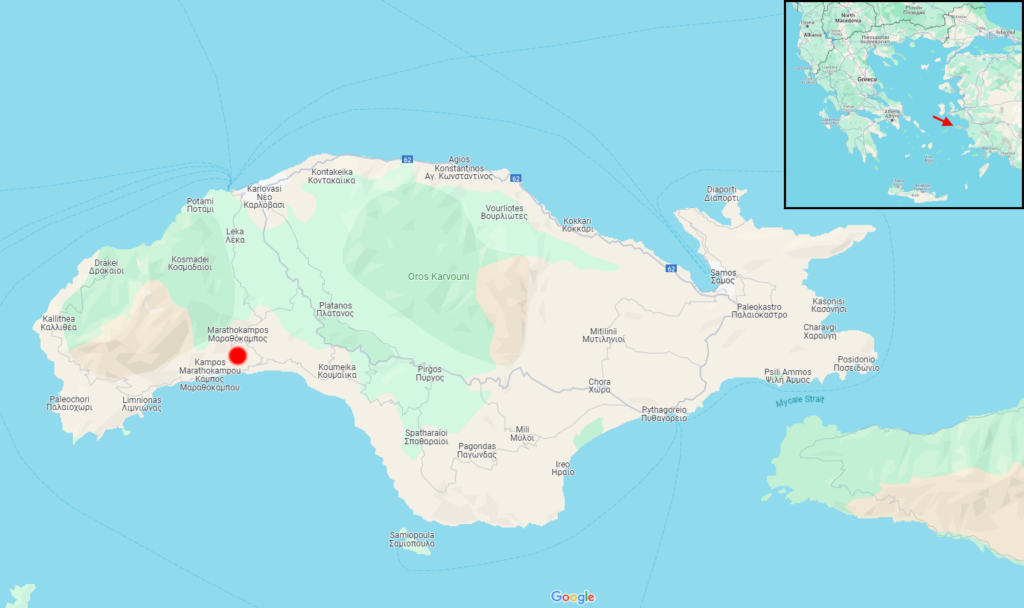
Of course, the primary goal remained a family vacation by the sea. Due to the high temperatures that reached up to 36°C during the day, it was only possible to look for reptiles early in the morning and after sunset. And so every morning I went out into the field for at least an hour. The surroundings of the town of Kampos, where we were staying, offered various places for herping. Of course, I selected these places in advance using Google maps and also with reference to the iNaturalist and Observation.org discovery databases. With exceptions, you could get everywhere without a problem, and only the tourist apartments by the coast were fenced off. Otherwise, the avid herpetologist can roam freely on the island along dusty roads, dry riverbeds or in olive groves. From the reports of previous expeditions, I read that the herpetofauna of Samos is diverse in terms of species, but the abundance of individual species is, on the contrary, relatively low. The huge number of cats certainly has its share in this, but at least now in summer, fortunately, they only stayed close to apartments and estates.
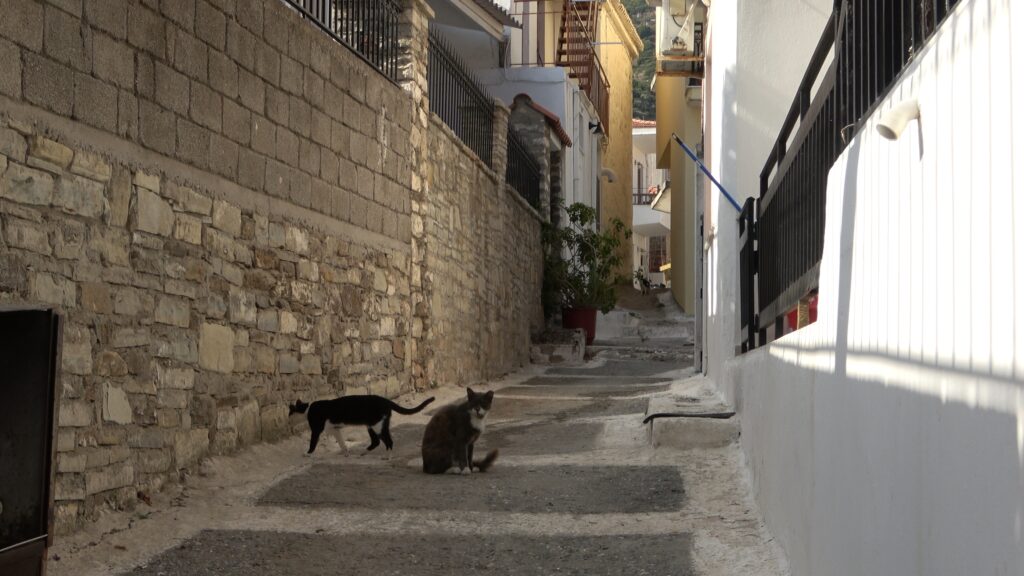
I was lucky that at the beginning of our holiday it got quite noticeably colder by local standards, and the first two days the daily temperature reached only 27°C. The very first night, I eagerly set out into the field. I came back a little disappointed, because in two hours I found only one Turkish gecko (Hemidactylus turcicus). Samos is home to probably the only native European population of common chameleons (Chamaeleo chamaeleon). So I spent quite a lot of time during the night herping searching through bushes and low trees in search of sleeping chameleons. Unfortunately, I did not succeed and during the entire stay I did not manage to find the chameleons. The paradox was that on the last day before departure, the daughter of the owner of our apartment saw an adult chameleon crossing the road right in the accommodation area. Of course, as soon as I found out, I started searching the garden. However, I searched in vain in the tangle of thick green bushes.
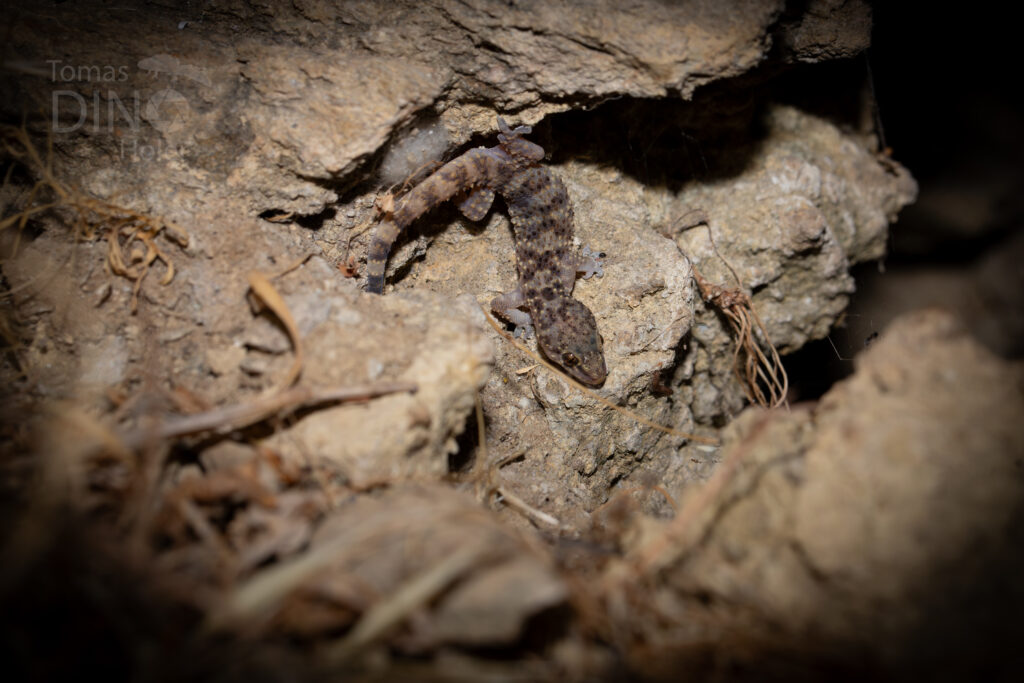
The very next morning I improved my appetite a bit. In the olive grove, I came across a few Rock agamas (Laudakia stellio) which were very shy and it was difficult for me to take a few pictures and shots. I was surprised not to encounter any small lizards on the first day. Only later during several other expeditions, I met some Snake-eyed lizards (Ophisops elegans) where I assumed a much greater concentration of individuals. Apparently, they are strongly reduced here by the already mentioned cats. One of these cute furry assassins even brought an adult agama to the owner of the apartment. She allegedly scolded the cat and (perhaps) saved the agama.


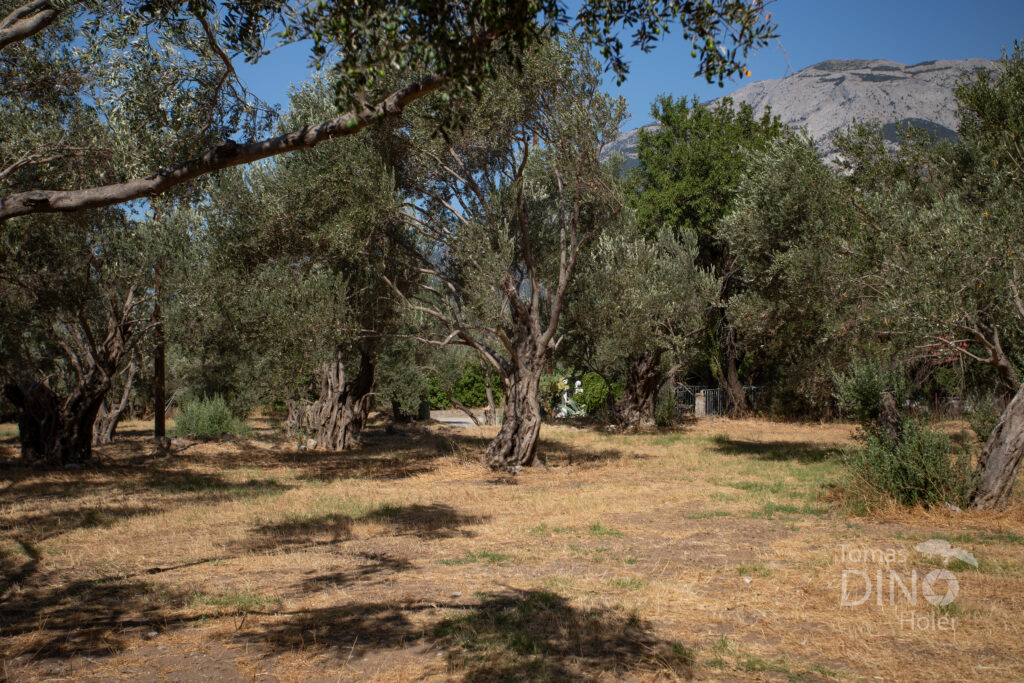
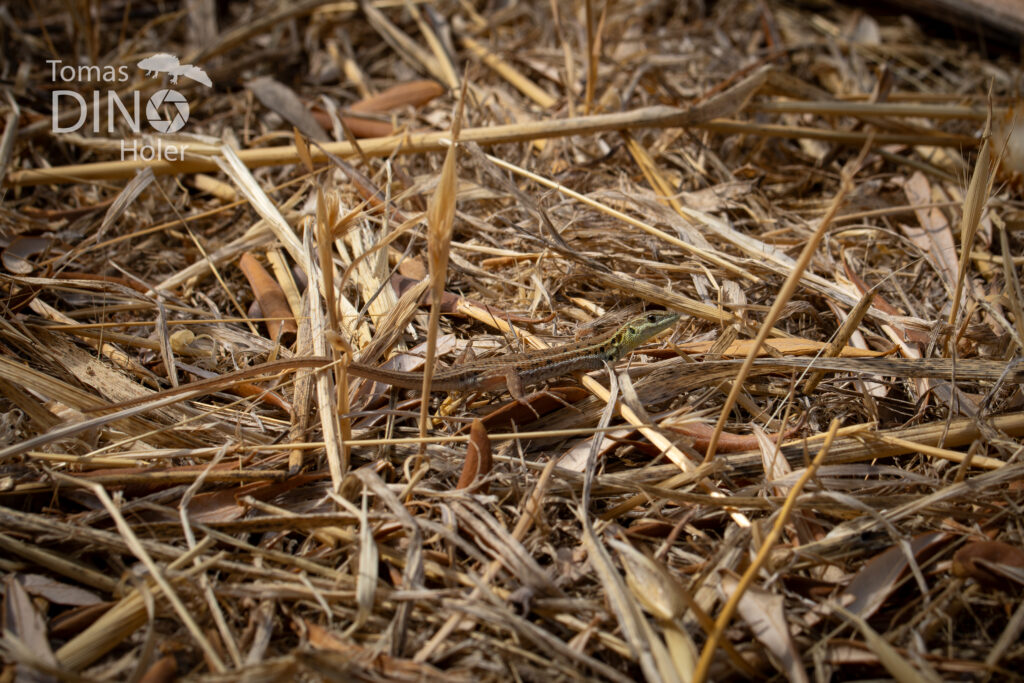
For daily herping, I chose a dry riverbed in a rather deep valley. I went through it practically every day, and thus I verified that going through the same territory over and over again can be quite effective. I found several more Rock Agamas here, which are definitely among the most numerous reptiles, at least for this part of the island. On the first day here, I also observed and almost caught a huge Caspian whip snake (Dolichophis caspius), whose length was estimately to be around 2m, despite the fact that it was missing a significant part of its tail. The injury looked fresh and although I got to the snake almost in time and grabbed the rest of its tail, most of the body was already deep under the wall between the stones so I let it go so as not to cause further trauma to the snake and I probably wouldn’t be able to get it out anyway. Later, I observed an adult Carian lizard (Lacerta diplochondrodes cariensis) in almost the same place, but I did not manage to photograph it, just like the whips snake. During other trips, I observed several more Snake-eyed lizards (Ophisops elegans), two Levant skinks (Heremites auratus) in this valley, and on the last day a long and very thin young snake flashed across my path, brown, slightly greenish in color, most likely a young Dahl´s whip snake (Platyceps najadum).
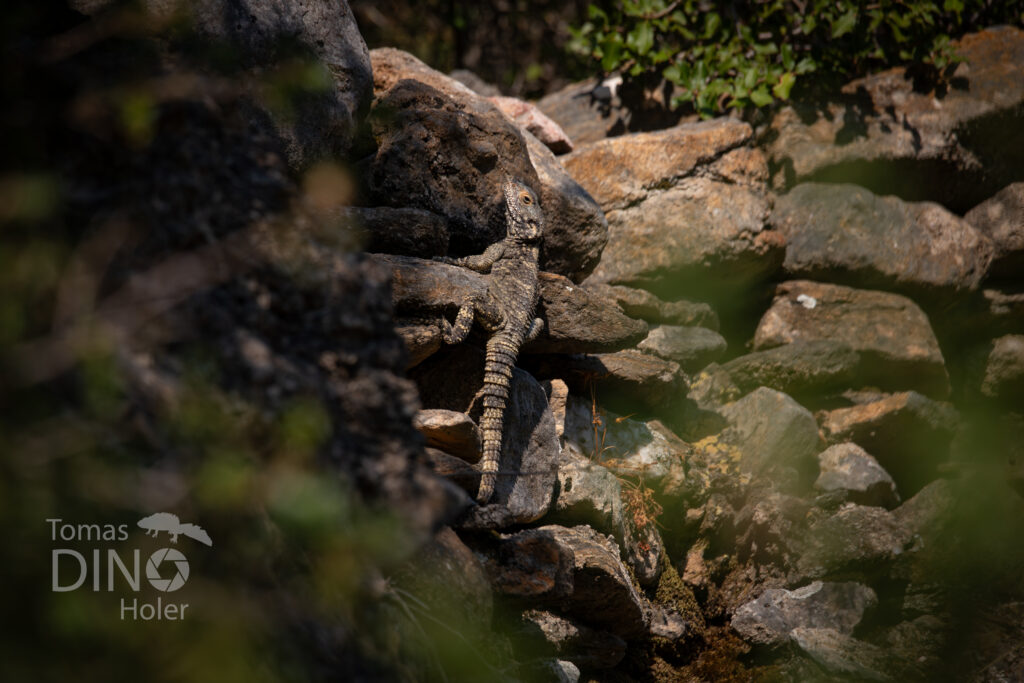
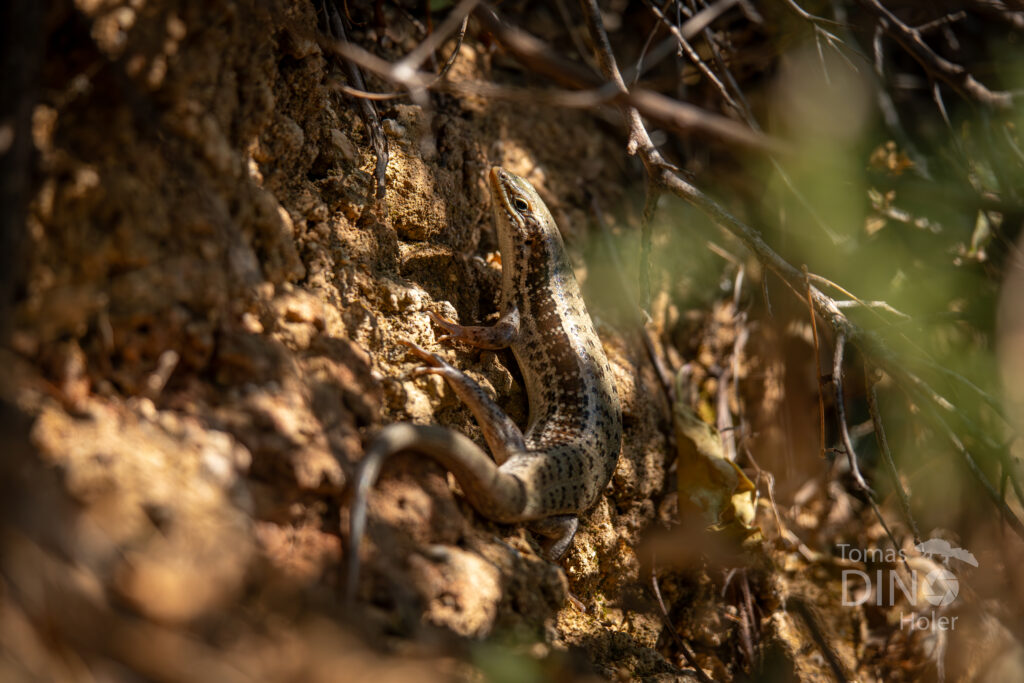
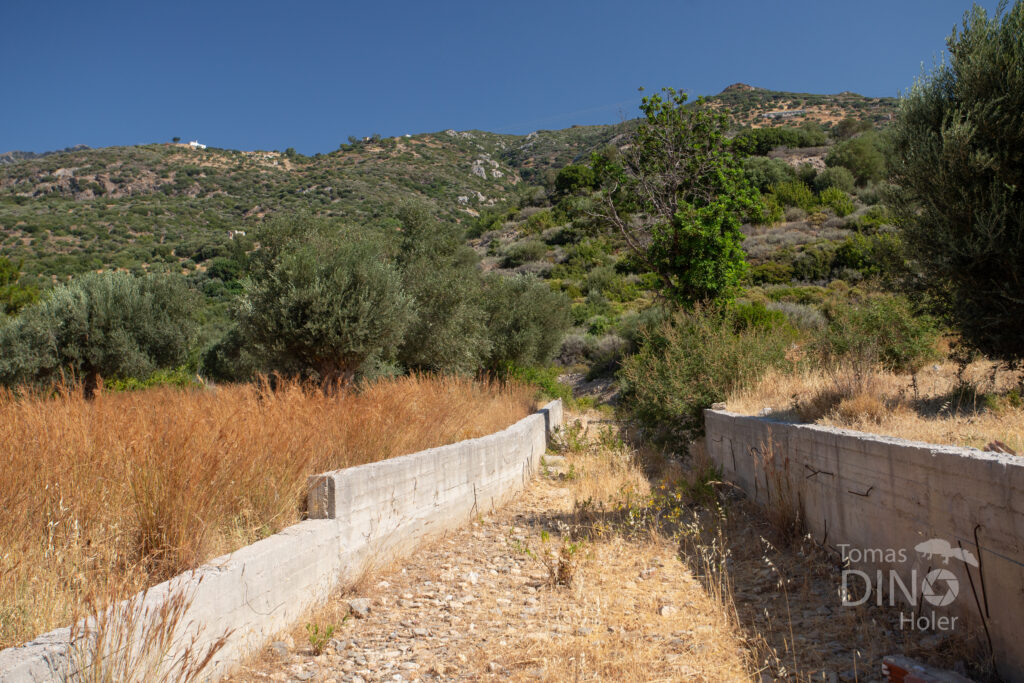
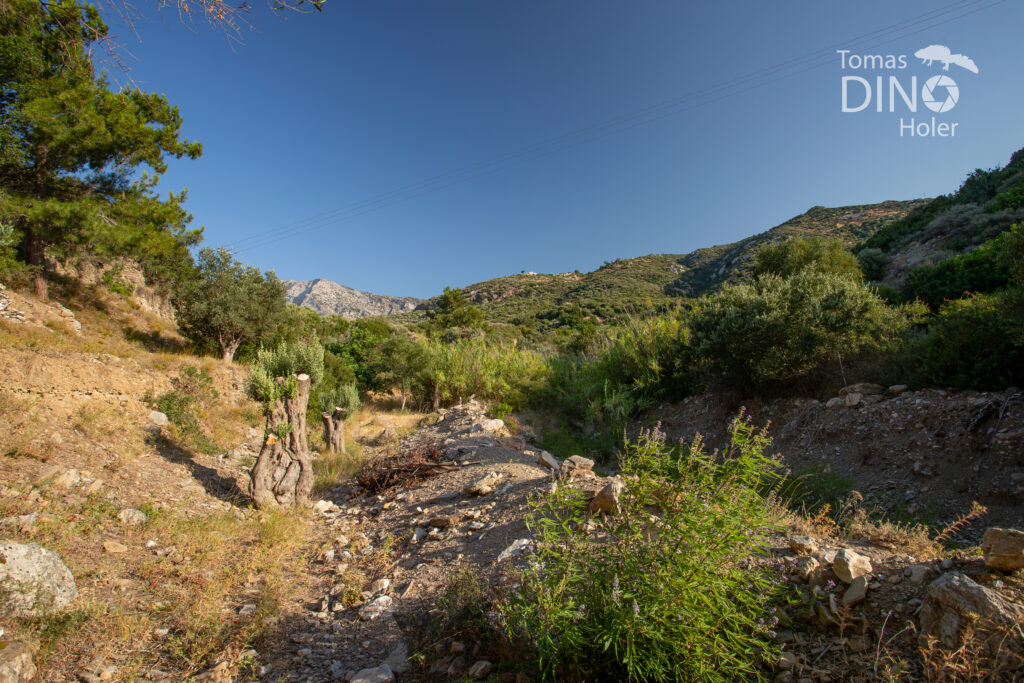
Of course I was hoping to find an Ottoman viper (Montivipera xanthina). I finally saw it, but unfortunately it was a roadkill on the road between the apartments. It had been dead for tens of minutes at the most, she wasn’t even stiffed yet, and I had walked through the same place about 2 hours before. There are relatively high mountains on Samos, the highest peak of which – Kerkis, reaches a height of 1443 m above sea level. Springs flow down from the mountains to the sea, some only in the spring, others are quite watery even in the summer. Farmers collect the water in small concrete tanks and use it to water their crops. In one such tank I came across several Levant water frogs (Pelophylax bedriagae).
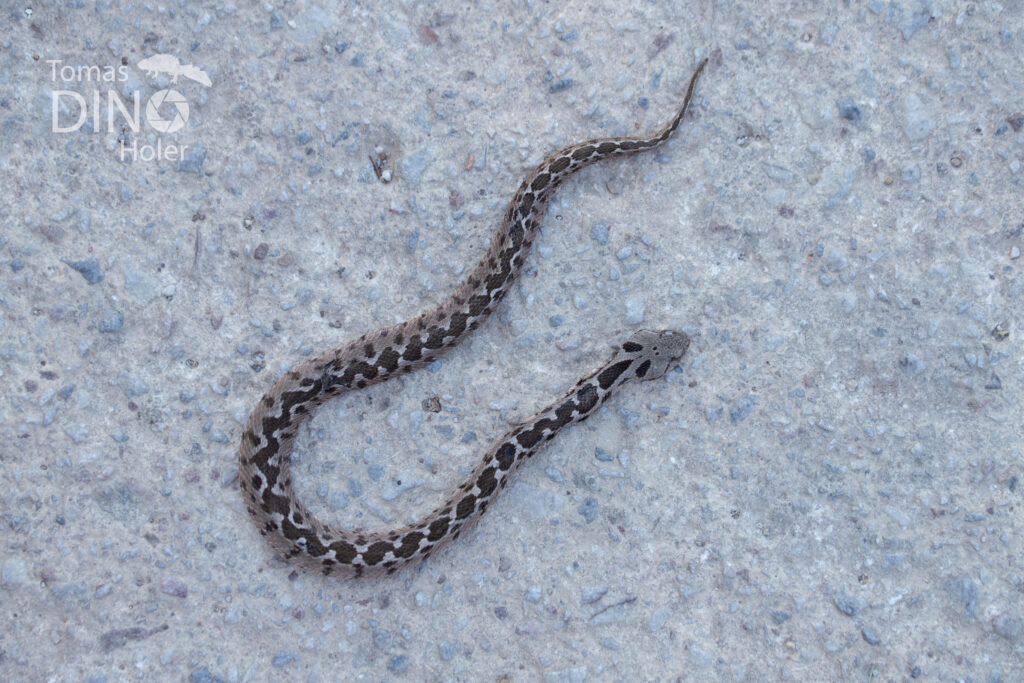
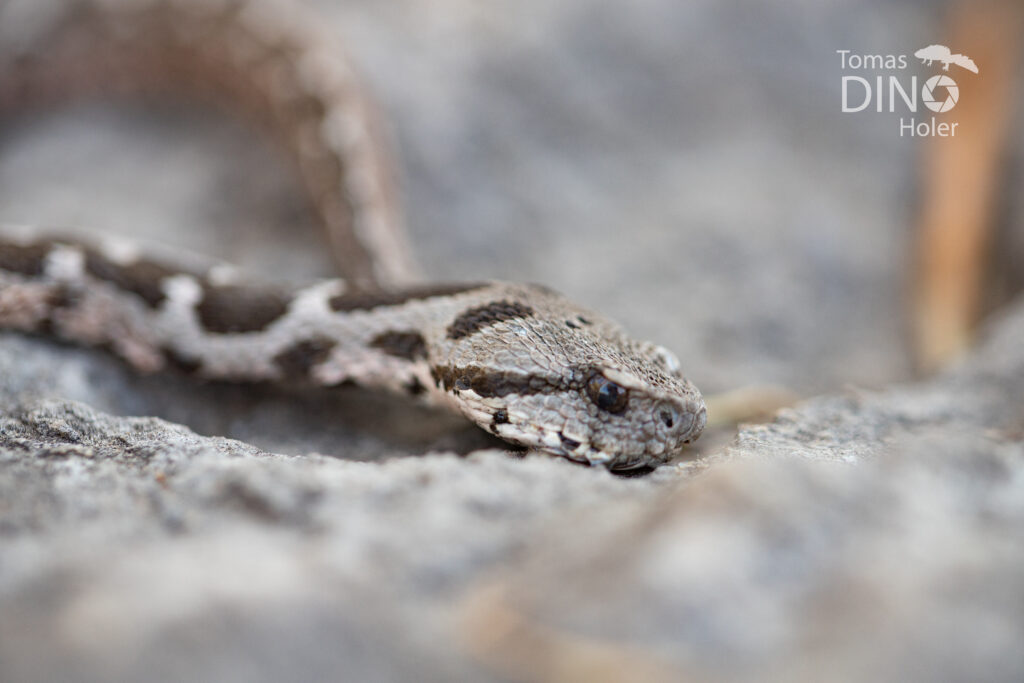

Luck smiled on me the most during one of the night errands. I was tired, but I didn’t want to lose a single opportunity, so after sunset I set out again to search the bushes for chameleons. After two hours of trying in vain, scratched by the thorns of the bushes and tired, I made my way back down the hills to the inhabited coast. I thought to myself, if I could meet at least one snake, maybe an European cat snake or a Leopard snake. And when I was almost at the edge of the town, above the escarpment by the road, I noticed a short, thin shape, resembling a snake. And indeed it was a snake! My first Javelin sand boa (Eryx jaculus). I was very happy with the find, I wanted to see these cryptically living amazing snakes for a long time!

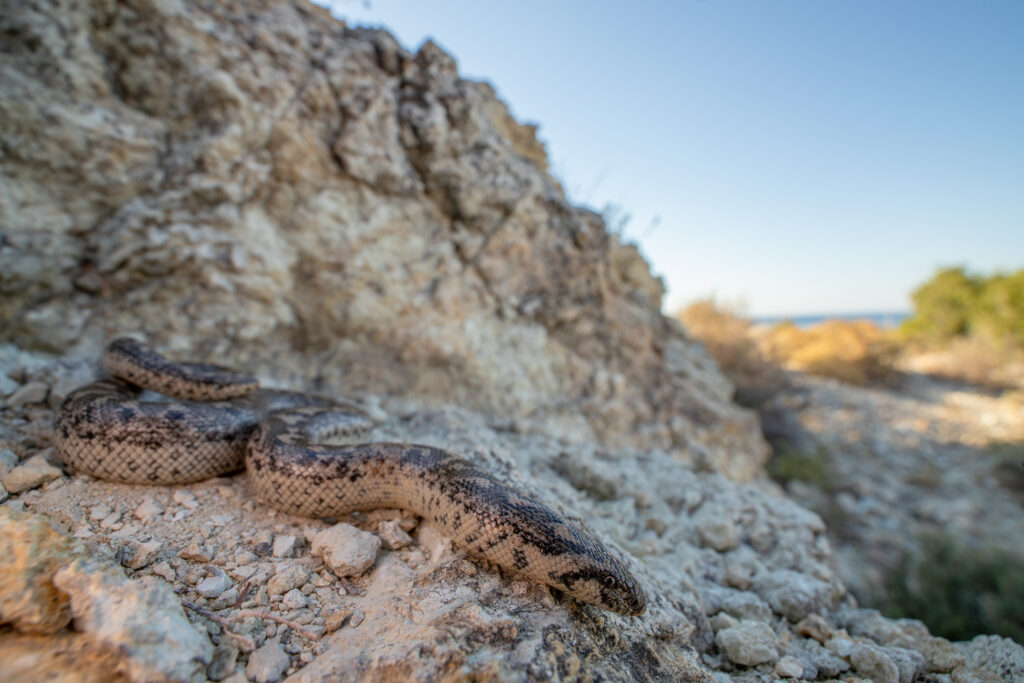
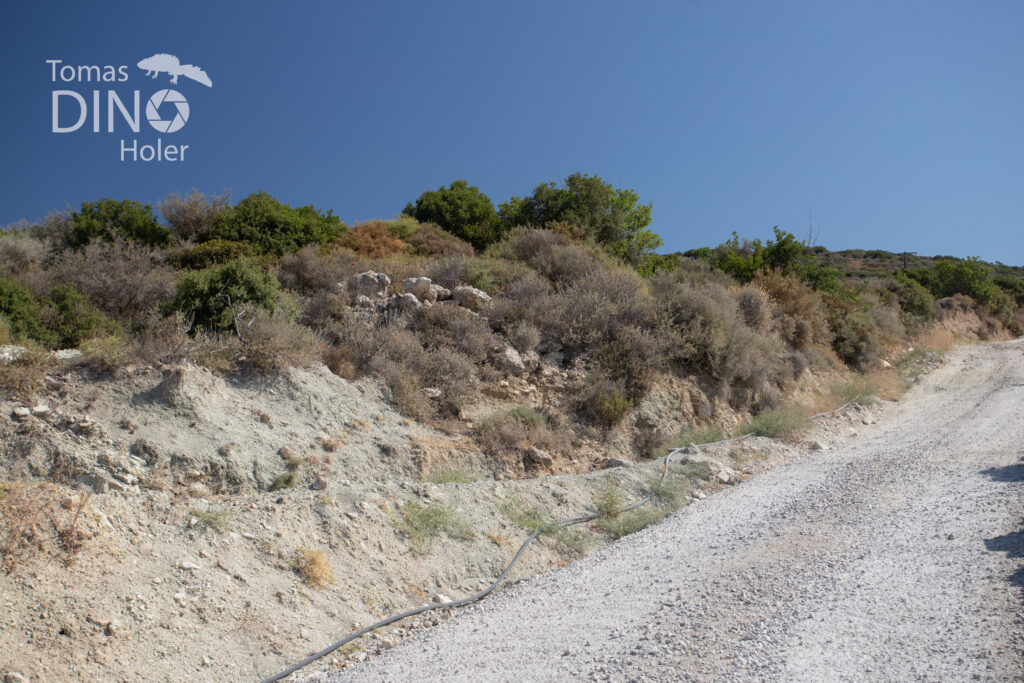
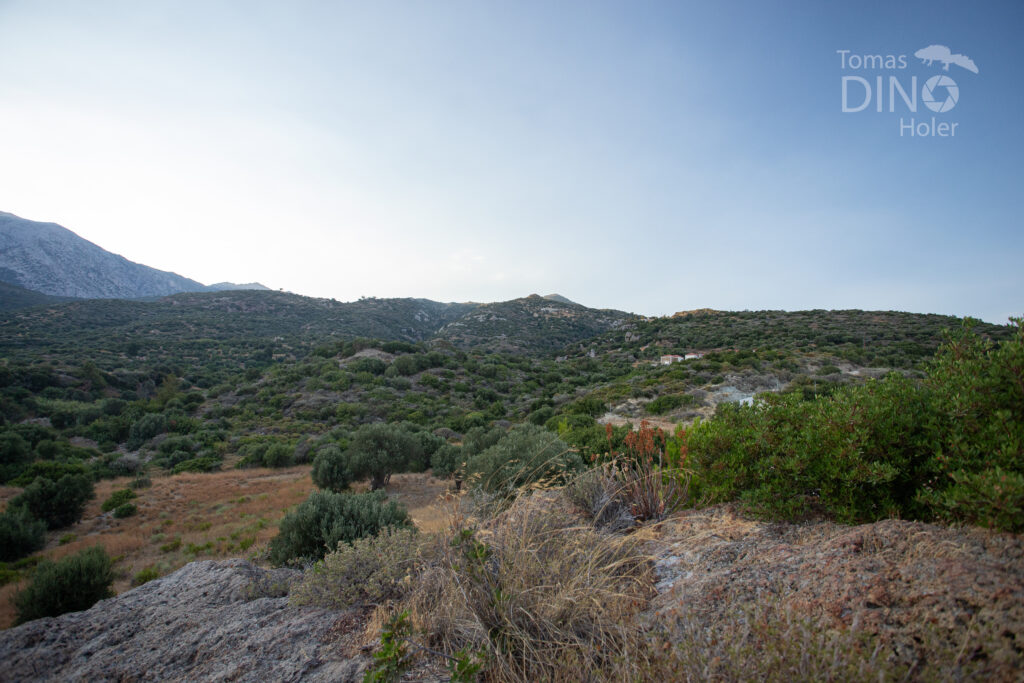
In the end, I found quite some species of the local herpetofauna during the limited time spent herping. But I would definitely like to return to these places, ideally sometime during the spring months, when the reptiles are much more active. However, the island of Samos represents to me one of the ideal vacation destinations for a herpetologist and his family.
Dino
List of species:
Total (10 species)
Amphibians (1 species)
Frogs (1 species)
Pelophylax bedriagae
Reptiles (9 species)
Lizards (5 species)
Laudakia stellio
Heremites auratus
Ophisops elegans
Lacerta diplochondrodes
Hemidactylus turcicus
Snakes (4 species)
Montivipera xanthina (přejetá)
Eryx jaculus
Dolichophis caspius
Platyceps najadum
